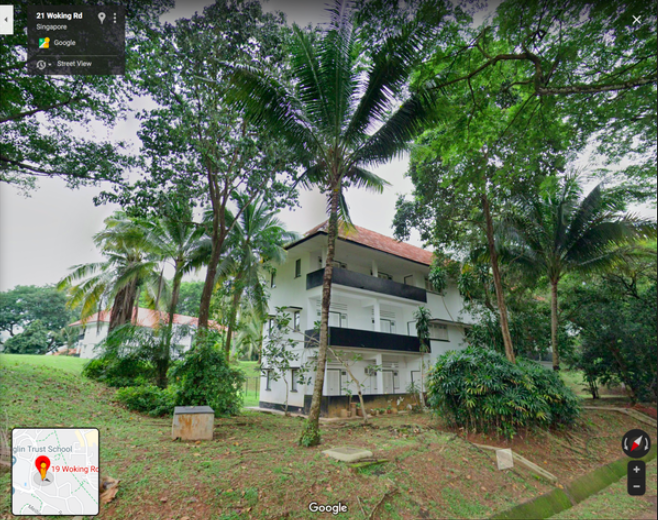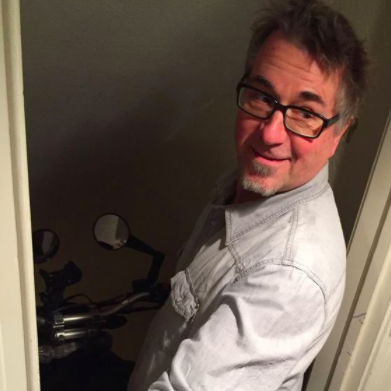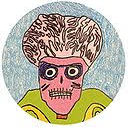- Caitlin Fisher
- Dr. Hendrix Neptune
- Tracey Steer
- Anonymous Poster
- Mr. Abbott & Dom Psd
- Hannah Council
- Steph Maynard
- Michael Murray
- Jen Cascino & Jordana Jacobs
- Alana Solomon
- Barb Murray
- Terry Maynard
- Zachary Rombakis
- Andrew Bethune
- Rebecca
- Rob Balcer
- Kathyrn McLeod
- Paul Fenn
- Jim Diorio
- Michael Harrington
Some experience climbing
I grew up in large measure about 20 feet off the ground. We lived near a Toronto ravine that had a number of highly climbable pines. Us kids used to sit up in them for hours, laughing, joking, getting sticky with sap and yelling insults down at neighbourhood kids. Sometimes I’d go home and my mother would sniff at me saying, “You smell of pine.” But she never asked why. Parents didn’t then. They lived their lives with their martinis, Craven *A* smokes, Tuero cigars, briar pipes and private business, while we attended to business of our own, all of which occurred outside.
I stopped tree-climbing when I hit my teens, but rediscovered it when I started my five-year Asia-Pacific adventure at age 28 in 1988. I came to calling it the hair shirt world tour. This was because of Åsa.
We met in the Kingdom of Tonga shortly after the story I’m going to tell you about climbing my first coconut palm. Åsa (pronounced OH-sa) was Swedish, 25, adventurous, pretty, six years on the road, quadralingual and jungle cat-tough. She and I saw each other one cool night in Nukualofa, the capital, in a Chinese restaurant. This became us dancing in a nightclub, necking in its parking lot, then me moving a few days later into the small blue wood shack near Homokilikau Beach she rented off a British engineer who ran a factory fabricating fishing boats. The other occupant was Carol, from San Luis Obispo. Each had arrived there on different sailing yachts – Åsa from New Zealand, Carol from California. Both were looking for crew positions on yachts to continue their adventures and try to make their lives at sea.
I liked the sound of that. I knew how to sail OK, and decided to join them in this pursuit. Problem was, there were very few yachts at rest in Nukualofa at that time. So there was nothing to do but do what new couples in their twenties do. That would chiefly be to fornicate, drink and cook – not always in that order.
Before meeting Åsa, I’d been staying at the far western end of Tongatapu, at the Good Samaritan Inn, one hut away from Jean-Pierre. J-P was 40, a French welder who’d recently fled the Bougainville Civil War, a nasty gold mine uprising in northern Papua New Guinea. We were the resort’s only two guests. We’d met a month before in a bar in Western Samoa and had become friends in adventure. He inhabited the kind of stories I wanted to find for myself. He and I explored the entirety of Samoa, then went to do the same in Tonga. Some two weeks in, he’d suddenly up and said, “Fuck ziss boring place. I miss Asia.” Bought a one-way ticket to Kuala Lumpur. Never saw the man again. So it goes.
The Samaritan was a cheap and functional (I wouldn’t quite say) resort, its redeeming qualities were: the French owner and his fabulous underpriced restaurant and aboveground wine cellar; the 20-30 foot swells rolling in day and night from the Southern Ocean to detonate on the coral fringing reef off our beach; the isolation of the place, made more profound by the drone of those waves; the 80-mile sea views; and night skies that seemed projected in 3-D.
After J-P left, I was alone at the Samaritan, so I moved back into town, where I soon met Åsa, eventually moving us right back out there so we could engage ourselves without disturbing Carol, who it seemed was a light sleeper.
This move was when Åsa noticed that I carried a total of 85lbs of luggage – a 35-litre backpack and an almost-as-big day-pack. She mocked me for my three pairs of shoes (one for running, one for leisure and one nice pair for passing through customs), my 11 pairs of socks, my oversized flipflops, my thick wool sweater, raingear set, plus tent, sleeping bag, foam mattress, mozzie net, several hardcover novels, dictionary (paperback… I’m not insane), two dozen cassettes, two Walkmans, a dozen rechargeable AA batteries with charger, two knives, global electric adaptor collection, toiletry kit with Remington shaver, oversized first aid kit, hip waders…. okay there were no hip waders, but you get the picture.
Åsa pledged that she’d convert me into a minimized, day-pack-only-carrying, $2 flipflop-wearing, paperback exchanging, tough-as-rocks adventurist like her. And so she set to work, which consisted of her making fun of me and me agreeing to donate, throw out or abandon one belonging after another. She also enjoyed taking the piss at how I travelled.
When I told her I’d booked a flight to Vava’u, in Tonga’s northern islands, she insisted I cancel it and take a three-day local ferry ride there with her instead. When I mentioned the sore back I’d acquired from sleeping on the steel floor of that screaming scow, she pointed out that if locals could do it, and she could do it, I could too. When I ordered a burger, she’d make me switch it to local food – fish or wild pig with boiled taro or cassava root. She acted as a sharpening tool to my fat and stupid pencil, if that pencil were the catalogue of my wasteful and comfort-seeking modes of travel. I was too in love to argue.
Now, let it be said here that I’d all along intended to become a tough, resourceful and minimalized traveller, just not quite at the pace she never-endingly prescribed. So it’s fair to proclaim I was already in this transformational state of mind before meeting her, on the hot afternoon that I decided to climb my first coconut palm.
—
As a white guy of six feet and around 190lbs, I figure I’ll have some schooling in store, so I decide my first ascent of palm had best be modest. I spot it while walking a jungle path along the deserted beach near the Samaritan. It’s no more than 15 feet from dirt to nuts. The tree has some footholds chopped into it, so I think, piece o’ cake. I wrap my hands around it, step out of my luxury flip-flops, into the first foothold and pull myself up. Two feet off the ground, and it is not bad. I slide my hands up some more and take another step up, such I have both feet in footholds, which are offset and far apart. It’s taking a little pain and effort to maintain position. It’s either abandon ship now or press on. I choose the latter.
I hurry on up to the coconut cluster, but it is not a glamourous struggle. And what now, now that I’m up there?
I try to slap one off. But I know next to nothing about coconuts yet, other than they come in green, brown or greenish brown, and that the green coco juice tastes fresher and nicer than the heavy, sweet milk from the brown ones. What I’ve yet to deduce is that because the green ones are young and still growing, they’re very much attached to their parent — and it’s a green one, or two, that I’m after.
I cannot budge and am sweating and winded, arms growing tired, feet ravaged by the woody divots into which are being ground my soft white-boy soles. I throw a hand around the base of a palm frond, thinking it’ll be easier to hang that way than to have one arm wrapped around the trunk while wrestling off coconuts.
I make the transition — almost falling out. Yes, I’m hanging off a frond, but its edge is unexpectedly sharp, like the dull side of a machete – the one thing I forgot to pack – and after a few seconds, my hand is sending out an SOS. But I’m closer to the big green nut I want. I try to nudge it free using more force than I could before.
Nothing. Nothing. And nothing. I push at several. No progress is made. I get an idea: twisting. I grab the base of the nut and torque it. It turns a little. I hear the subtle crack of fibres inside. This is the first good news of the enterprise. I give it another twist. More turning of the nut, more fibres giving way. I’m certain one more twist will do it.
My body is shaking, in agony and I’m breathless, about to faint or die. I give it a third and a fourth and a fifth twist, calling to it to please drop. After several more, the huge coconut snaps off, rolls down my arm, bops me on the head painfully, and bounces off my left shoulder, also painfully, before falling to the ground with a great thud.
I try for one more, but simply can’t stick around long enough to disturb it. I first make the frightening transition back from the frond back to the trunk, nearly falling off again. Now my arms are back to hugging the slippery, but rough, trunk with two beleaguered feet taking my full weight, forearms wailing, hands weakening at about 33% per second. I make my way down in what’s hoped will be a controlled descent, but the pain and power loss are too great. Velocity increases at an unplanned rate, forearms dragging along the bark, feet sliding out of the footholds, because it’s now too painful to hold them in. The two fast-converging choices are to slide down and hope for the best, or fall down and plan for the worst.
I manage to hold on just tight enough that I don’t bust a limb on landing, but my shirt and shorts have both slid up and I’ve sanded off all 28 of my chest hairs, much of my nipples and a ham sandwich’s worth of thigh skin. I come to a hard stop at the base of the sleepy palm, out of steam, breath and with dozens of tiny injuries bleeding from arms, legs and torso.
But I am victorious. I have my green coconut. And it is fat and fresh. I pick it up to enjoy the fruit of my labours. Except how? I have brought no knife. I try to bite off a piece of the green fibrous husk, to get things started. This does some damage to my right incisors. Nothing gives. I look around for a pointy stick or object. Nothing is found.
I decide to move my coconut to the beach to find a sharp edge of black lava rock upon which to whack it. This I do, only to beat up the nut into a pulp at one end. Some juice does dribble out, but I have made no defined cut or drinking hole. When I tilt it up to sip from, juice showers my face, along with sand, bits of lava rock and coconut fibres, which I try to filter through my teeth.
Still, I drink what I can get down my throat, call it Lesson #1, hard taught.
—
Over time I would become an expert at using long poles and sticks – or procuring professionals – to get green coconuts. I also became adept at opening coconuts young, old and middle-aged. For each has its uses. I can now do it with a small Swiss Army Knife blade; it’s all about leverage. J-P once showed me this.
And yes, I climbed more coconuts, but generally the droopy beach ones — and even these can easily turn dangerous, as Keith Richards discovered in Fiji. The rule of thumb: No matter how inviting the palm, don’t climb it any higher than you’d like to fall.
In my last year living in the tropics, 1998, in Singapore, I had a couple of Aussie mates who lived down the street on the old British Army residential compound known as Portsdown Rd, built in the ‘50s. We were rock climbers, mountain bikers and did MMA and gym training sessions in their garden. We got the idea of putting a proper climbing anchor in the vertical 25-foot coconut palm growing out back, keeping a rope in it so we could practice climbing with a harness and climbing shoes in safety. This did make it safer, but no easier. I proclaim I never came close to mastering it.
Yes, climbing coconuts is best left to experts. But growing them? That’s another matter. I left my mark in Singapore by being the proud parent of every coconut palm visible in the attached screengrab from Google Street View. They surround the ground-floor apartment in which I lived for a couple of years. I planted these around 1996, so they’d be 24 years old at the time of writing this. Sad to see they look malnourished and seem not to be bearing fruit. I remember that soil being hot red clay, so it’s a testament to their endurance that they’ve hung on this long.
It’s good to hang on.


Paul Fenn
Paul Fenn is a self-employed all-purpose hack. He writes for ad agencies, has written a two-volume autobiography of his five-year Asia-Pacific hair shirt tour and six-year residence in Singapore entitled “Eleven Year Vacation”, which no one would publish. He recently completed a commissioned biography about his Uncle Jack (RIP) called “Last of the Great Swashbucklers” which will be published when his cousin gets his shit together enough to make that occur. Paul also reviews and writes about motorcycles for EatSleepRIDE and Traction and enjoys riding his KTM 950 Super Enduro in regions swampy, sandy and rocky. He lives in Etobicoke, Ontario with his wife and daughter.
